Ground-based FAGE Fieldwork

AIRPRO, Beijing, November/December 2016 and May/June 2017

In Beijing poor urban air quality has a demonstrable effect on human health; with high aerosol loading during winter and high ozone episodes during summer. The hydroxyl radical (OH) mediates virtually all of the oxidative chemistry in the atmosphere, being responsible for the transformation of primary emissions into secondary pollutants such as NO2, O3 and SOA. High oxidation capacity on hazy days has previously been inferred from the significant contribution secondary organic aerosol (SOA) make to total PM2.5 (Huang et al., 2014). The recent ‘An Integrated Study of AIR Pollution PROcesses in Beijing (AIRPRO)’ project which took place in November/December 2016 and May/June 2017 in central Beijing aims to deliver a comprehensive range of atmospheric measurements across Beijing. These observations complemented by modelling will be used in an effort to improve predictive capability for air quality in Beijing. The main aims and objectives of APHH with respect to radical species are to measure such species concurrent with their sources and sinks and to quantify the oxidative budget of London’s urban atmosphere both in winter and in summer.
The University of Leeds is responsible for measurements of gas phase radicals (i.e. OH, HO2 and RO2), OH reactivity and formaldehyde. The comprehensive suite of field measurements planned during the AIRPRO campaigns will be followed by a detailed synthesis of the winter and summer datasets to enable the oxidative budget of the winter and summer atmospheres to be determined. These field observations will be used to constrain a detailed zero-dimensional model based on the Master Chemical Mechanism and the model will be used to calculate the oxidative budget of Beijing's urban atmosphere.
Weybourne, 2015
ClearfLo: London, 2012



Urban pollution such as that currently endured in London has an adverse effect on human health. However, an understanding of the chemical processes responsible for such poor air quality is incomplete. The Clean Air for London (ClearfLo) campaign in Jan/Feb 2012 and July/August 2012 aims to deliver a comprehensive range of atmospheric measurements across London at both ground based and elevated sites. These observations complemented by modelling will be used in an effort to improve predictive capability for air quality in London. The main aims and objectives of ClearfLo with respect to radical species are to measure such species concurrent with their sources and sinks and to quantify the oxidative budget of London’s urban atmosphere both in winter and in summer.
The University of Leeds is responsible for measurements of gas phase radicals (i.e. OH, HO2 and RO2). The comprehensive suite of field measurements planned during the ClearfLo campaigns will be followed by a detailed synthesis of the winter and summer datasets to enable the oxidative budget of the winter and summer atmospheres to be determined. These field observations will be used to constrain a detailed zero-dimensional model based on the Master Chemical Mechanism and the model will be used to calculate the oxidative budget of London’s urban atmosphere.
Further information can be found at http://www.clearflo.ac.uk/.
HCCT: Germany, 2010


The ground-based FAGE instrument took part in the HCCT-2010 campaign, which ran from the 13th September until 24th October 2010. The project is funded by the Leibniz-Institut fur Tropospharenforschung (IFT) and involves collaboration with a number of international partners.
Clouds play a crucial role in the chemistry of the atmosphere, occupying, on average ~ 15 % of the volume of the lower atmosphere. Modelling studies have shown that aqueous phase chemistry in clouds can influence gas phase radical chemistry and in turn can cause significant reductions in the oxidative capacity. The HCCT project aims to quantify the uptake of OH and HO2 radicals in cloud droplets and to study the dependency of this uptake efficiency on the different microphysical and chemical conditions encountered during different cloud events. The instrument was located at Mt. Schmucke, Thuringia in Germany; a site where hill cap clouds frequently occur. The photograph shows the FAGE instrument measuring during a cloud event; the detection cell is co-located at the top of the 22 m tower alongside cloud water samplers and other instrumentation.
Analysis of the measurements made during the campaign are underway.
SOS: Cape Verde, 2009


In 2009 the aircraft FAGE instrument was used in its ground configuration to make measurements of OH and HO2 at the Cape Verde Observatory, during the Seasonal Oxidant Study (SOS).
Seasonal influences on OH and HO2 chemistry were investigated during three intensive measurement campaigns made in three distinct seasonal periods; SOS1 during February-March (generally dry with clear sky), in June during SOS2 (clear and dry), and SOS3 in September (some sustained periods of heavy rainfall). Concentrations of OH and HO2 were higher in the summer months, with maximum summer daytime concentrations of ~ 9 × 106 and 4 × 108 molecule cm-3, respectively.
References
Vaughan, S.; Ingham, T.; Whalley, L. K.; Stone, D.; Evans, M. J.; Read, K. A.; Lee, J. D.; Moller, S. J.; Carpenter, L. J.; Lewis, A. C.; Fleming, Z. L.; Heard, D. E. Seasonal Observations of OH and HO2 in the remote tropical marine boundary layer, Atmospheric Chemistry and Physics, 12, 2149-2172, 2012
OP3: Borneo, 2008
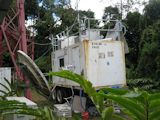

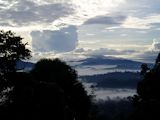
The Oxidant and Particle Photochemical Processes (OP3) project over a South-East Asian tropical rain forest took place in Borneo in 2008, cosisting of two intensive ground based campaigns and an aircraft campaign to coincide with the second ground-based measurement period.
The FAGE group took part in all three measurement campaigns. Despite low ozone concentrations, limiting primary production of OH from ozone photolysis, ground based observations found significant OH levels - up to 8.7 x 106 molecule cm-3. In addition, the OH lifetime instrument measured high OH reactivity, corresponding to a lifetime for OH approaching 10 ms, indicating that significant additional OH sources must be present.
OH concentrations up to 6 x 105 molecule cm-3 were also recorded on several nights after j(O1D) had dropped to zero, suggesting a non-photolytic source of OH.
References
Whalley, L. K.; Edwards, P. M.; Furneaux, K. L.; Goddard, A.; Ingham, T.; Evans, M. J.; Stone, D.; Hopkins, J. R.; Jones, C. E.; Karunaharan, A.; Lee, J. D.; Lewis, A. C.; Monks, P. S.; Moller, S. J.; Heard, D. E. Quantifying the magnitude of a missing hydroxyl radical source in a tropical rainforest, Atmospheric Chemistry and Physics, 11, 7223-7233, 2011
Edwards, P. M.; Evans, M. J.; Furneaux, K. L.; Hopkins, J.; Ingham, T.; Jones, C.; Lee, J. D.; Lewis, A. C.; Moller, S. J.; Stone, D.; Whalley, L. K.; Heard, D. E. OH Reactivity in a South East Asian tropical rainforest during the Oxidant and Particle Photochemical Processes (OP3) project, Atmospheric Chemistry and Physics, 13, 9497-9514, 2013
COBRA: Canada, 2008
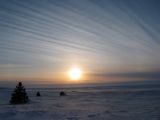
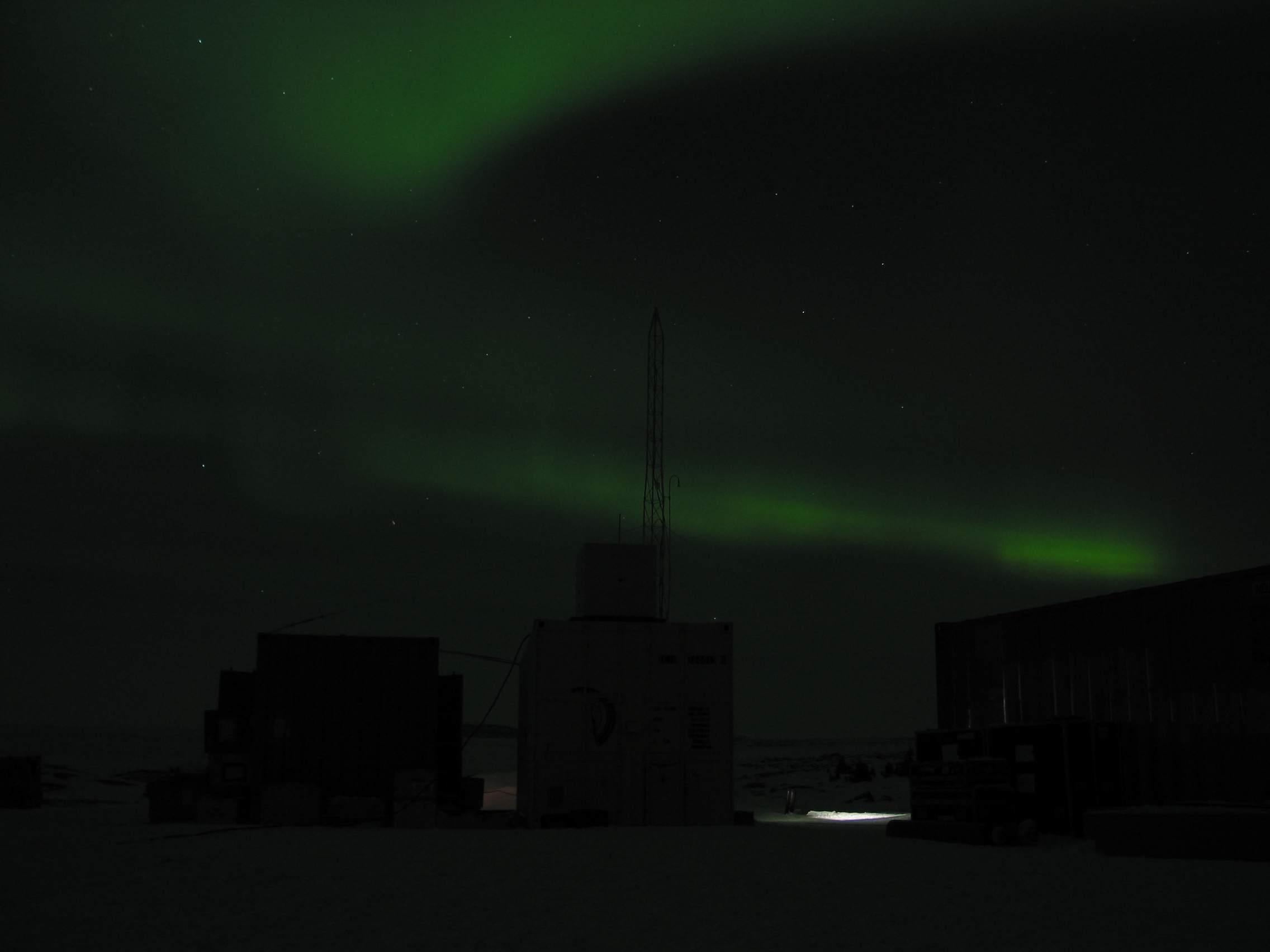

Direct measurements of OH and HO2 radical concentrations were made, using the University of Leeds FAGE instrument, as part of the COBRA (Combined Impact of Iodine and Bromine Release on the Arctic Atmosphere) campaign, on the coast of Hudson Bay during spring 2008.
Mean noontime OH and HO2 concentrations of (0.765 ± 1.05) x 106 molecule cm-3 and (1.34 ± 0.62) x 108 molecule cm-3 respectively, were observed. These observations were used in conjunction with a box model, constrained to supporting observations, to asses the radical budget in this cold, northerly environment. HCHO photolysis was found to be the dominant daytime radical source, providing 74 % of the observed HOx, with observed HCHO concentrations requiring the presence of a considerable (>80%) surface source. Model simulations also suggest significant roles for halogen chemistry and the heterogeneous loss of HO2. The formation of HO2NO2 has been identified as playing an important role as a radical reservoir, reducing HOx concentrations during the day, and thus impacting both local oxidising capacity and ozone production. The sensitivity of the local chemistry to uncertainties in these processes is explored, the majority of which are not represented in global chemistry models.
References
Edwards, P. M.; Evans, M. J.; Commane, R.; Ingham, T.; Stone, D.; Mahajan, A. S.; Oetjen, H.; Dorsey, J. R.; Hopkins, J. R.; Lee, J. D.; Moller, S. J.; Leigh, R.; Plane, J. M. C.; Carpenter, L. J.; Heard, D. E. Hydrogen oxide photochemistry in the northern Canadian spring time boundary layer, Journal of Geophysical Research, 116, D22306, 2011
RHaMBLe: Cape Verde ground-based campaign, 2007
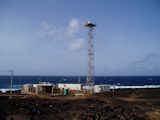
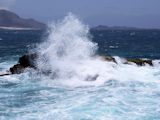


The Reactive Halogen Marine Boundary Layer (RHaMBLe) project aimed to quantify the impact of reactive halogen species at both coastal and open ocean locations. The second leg of the project, focussing on open ocean impacts, took place at the Cape Verde Atmospheric Observatory in 2007. The site is located ~ 500 km off the West coast of Africa and is predominantly under the influence of background, tropical marine boundary layer air.
During the project the ground-based FAGE instrument made measurements of OH and HO2. Owing to high humidity and low solar zenith angle experienced at the site midday OH concentrations reached around 1 x 107 molecule cm-3 and HO2 levels were as high as 7 x 108 molecule cm-3 on some days.
Although the halogen oxide concentration in this region is low, steady state analysis of the HOx radicals highlights that reaction of HO2 with IO and BrO radicals acts as a major HO2 sink in this region, whilst photolysis of the reaction products (HOI and HOBr) is an important OH source. This work demonstrates the importance of halogen chemistry in the remote MBL and that to accurately predict global OH levels this chemistry should be included in model simulations.
References
Whalley, L.K.; Furneaux, K.L.; Goddard, A.; Lee, J.D.; Mahajan, A.; Oetjen, H.; Read, K.A.; Kaaden, N.; Carpenter, L.J.; Lewis, A.C.; Plane, J.M.C.; Saltzman, E.S.; Wiedensohler, A.; Heard, D.E. The chemistry of OH and HO2 radicals in the boundary layer over the tropical Atlantic Ocean, Atmospheric Chemistry and Physics, 10, 1555-1576, 2010
Read, K.A.; Mahajan, A.S.; Carpenter, L.J.; Evans, M.J.; Faria, B.V.E.; Heard, D.E.; Hopkins, J.R.; Lee, J.D.; Moller, S.J.; Lewis, A.C.; Mendes, L.; McQuaid, J.B.; Oetjen, H.; Saiz-Lopez, A.; Pilling, M.J.; Plane, J.M.C. Extensive halogen-mediated ozone destruction over the tropical Atlantic Ocean, Nature, 453, 7159-1235, 2008
CHABLIS: Halley Base, Antarctica, 2006
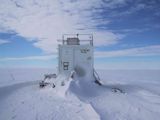
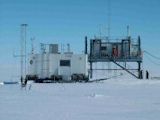

The Chemistry of the Antarctic Boundary Layer and the Interface with Snow (CHABLIS) project took place at the Halley Research Station, Antarctica from Jan 2004 - Feb 2005. The ground-based FAGE instrument was deployed at the site during the austral summer of 2005 and made round-the-clock measurements of OH and HO2 for 6 weeks. Peak OH and HO2 concentrations were ~ 8 x 105 molecule cm-3 and 3.8 x 107 molecule cm-3 respectively.
Photolysis of O3 and formaldehyde were found to be the dominant source of the radicals, whilst, NOx, originating from snowpack photochemistry, and the halogen oxides present, were the dominant species leading to radical inter-conversion and enhancement of OH.
References
Bloss, W.J.; Lee, J.D.; Heard, D.E.; Salmon, R.A.; Bauguitte, S.J.-B.; Roscoe, H.K.; Jones, A.E. Observations of OH and HO2 radicals in coastal Antarctica, Atmospheric Chemistry and Physics, 7, 4171-4185, 2007
NAMBLEX: Mace Head, Ireland, 2002
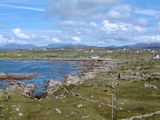
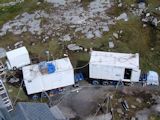
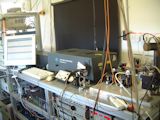

The North Atlantic Marine Boundary Layer Experiment took place at Mace Head, Ireland in the summer of 2002. One of the main aims of the NAMBLEX campaign involved the comparison of concentration measurements of a range of free radical species (OH, HO2, RO2 and NO3) with calculations of a zero-dimensional box model based on the MCM, allowing a quantitative test of the basic understanding of oxidation processes in clean and moderately polluted MBL air.
Through this work the importance of halogen chemistry and aerosols upon HOx levels was demonstrated.
References
Bloss, W.; Lee J.D.; Johnson G.P.; Sommariva R.; Heard, D.E.; Saiz-Lopez, A.; Plane, J.M.C.; McFiggans, G.; Coe H.; Flynn, M.; Williams, P.; Rickard A.R.; Fleming, Z.L., Impact of halogen monoxide chemistry upon boundary layer OH and HO2 concentrations at a coastal site, Geophysical Research Letters, 32, L06814, 2005
Smith, S. C.; Lee, J. D.; Bloss, W.; Johnson G.P.; Heard, D.E., Concentrations of OH and HO2 radicals during NAMBLEX: Measurements and steady-state calculations, Atmospheric Chemistry and Physics, 6, 1435-1453, 2006
Fleming, Z. L.; Monks, P. S.; Rickard, A. R.; Heard, D. E.; Bloss, W.; Seakins, P. W.; Sommariva, R.; Pilling, M. J.; Morgan, R.; Green, T. J.; Brough, N.; Mills, G. P.; Penkett, S. A.; Lee, J. D.; Saiz-Lopez, A.; Plane, J. M. C., Peroxy radical chemistry and the control of ozone photochemistry at Mace Head, Ireland, Summer of 2002, Atmospheric Chemistry and Physics, 6, 2193-2214, 2006
Heard, D. E.; Read, K. A.; Methven, J.; Al-Haider, S.; Bloss, W.; de Leeuw, G.; Johnson, G. P.; Pilling, M. J.; Seakins, P. W.; Smith, S. C.; Sommariva, R.; Stanton, J.; Still, T.; Brooks, B. J.; Jackson, A. V.; McQuaid, J. B.; Morgan, R.; Smith, M. H.; Carpenter, L. J.; Carslaw, N.; Hamilton, J. F.; Hopkins, J. R.; Lee, J. D.; Lewis, A. C.; Purvis, R. M.; Wevill, D. J.; Brough, N.; Green, T. J.; Mills, G. P.; Penkett, S. A.; Plane, J. M. C.; Saiz-Lopez, A.; Worton, D.; Monks, P. S.; Fleming, Z. L.; Rickard, A. R.; Alfarra, M.; Allan, J. D.; Bower, K.; Coe, H.; Cubison, M.; Flynn, M.; McFiggans, G.; Gallagher, M. W.; Norton, E. G.; O'Dowd, C. D.; Shillito, J.; Topping, D.; Vaughan, G.; Williams, P.; Bitter, M.; Ball, S. M.; Jones, R. L.; Povey, I. M.; O'Doherty, S.; Simmonds, P. G.; Allen, A.; Kinnersley, R. P.; Beddows, D. C. S.; Dall'Osto, M.; Harrison, R. M.; Donovan, R. J.; Heal, M. R.; Jennings, S. G.; Noone, C.; Spain, G., The North Atlantic Marine Boundary Layer Experiment (NAMBLEX). Overview of the campaign held at Mace Head, Ireland, in Summer 2002, Atmospheric Chemistry and Physics, 6, 2241-2272, 2006
Sommariva, R.; Bloss, W.; Brough, N.; Carslaw, N.; Flynn, M.; Haggerstone, A. L.; Heard, D. E.; Hopkins, J. R.; Lee, J. D. L.; Lewis, A. C.; McFiggans, G.; Monks, P. S.; Penkett, S. A.; Pilling, M. J.; Plane, J. M. C.; Read, K.; Saiz-Lopez, A.; Rickard, A. R.; Williams, P., OH and HO2 chemistry during NAMBLEX: roles of oxygenates, halogen oxides and heterogeneous uptake, Atmospheric Chemistry and Physics, 6, 1135-1153, 2006
PUMA: West Midlands, UK, 1999-2000
The Pollution in the Urban West Midlands (PUMA) project was sponsored by NERC under the Urban Regeneration in the Environment thematic program. The aim of the project was to comprehensively monitor urban air quality over two four week field campaigns in the summer of 1999 and winter of 2000 at a central site within the West Midlands. Measurements of OH and HO2 in urban areas are scarce, and this campaign provided the first example of such measurements in the UK.
References
Emmerson K.M.; Carslaw N.; Carpenter L.J.; Heard, D.E.; Lee J.D.L.; Pilling, M.J. , Urban Atmospheric Chemistry During the PUMA Campaign 1: Comparison of modelled OH and HO2 concentrations with measurements, Journal of Atmospheric Chemistry, 52, 142-164, 2005
Heard D.E.; Carpenter L.J.; Creasey D.J.; Hopkins J.R.; Lee J.D.L.; Lewis A.C.; Pilling M.J.; Seakins P.W.; Carslaw N.; Emmerson, K.M., High levels of the hydroxyl radical in the winter urban troposphere, Geophysical Research Letters, 31, L18112, 2004
